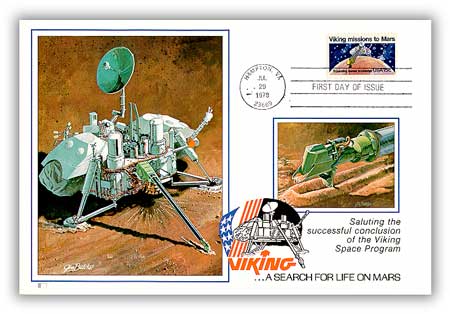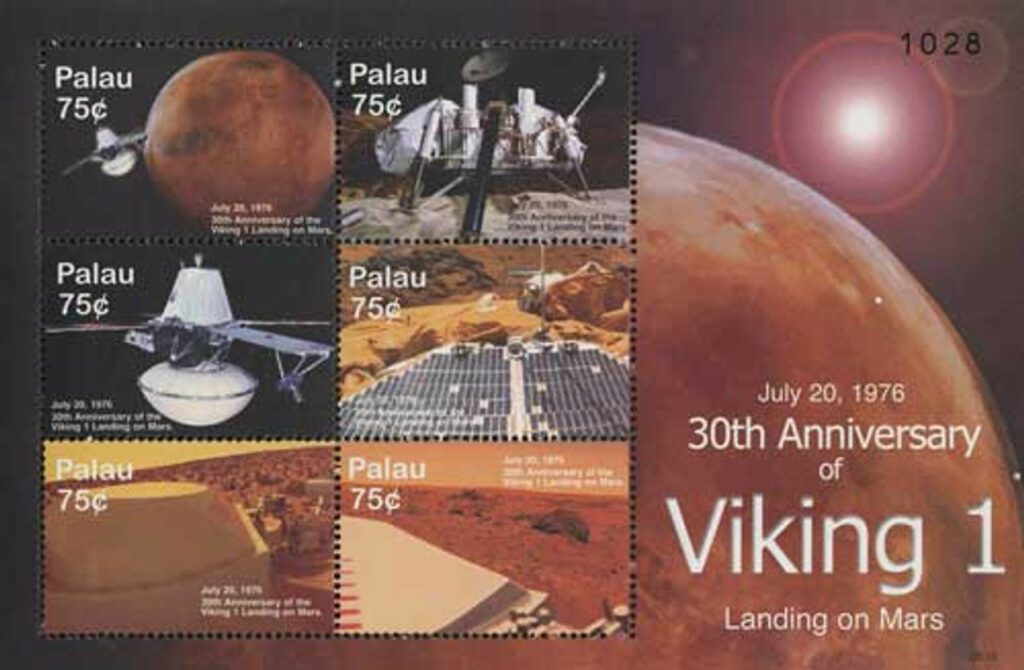On July 20, 1976, Viking 1 became the first man-made object to land on Mars.
As early as 1966, officials recommended that research objectives in the post-Apollo era focus on the unmanned exploration of Mars. The Viking 1 mission – with a landing planned to coincide with the nation’s July 4, 1976, Bicentennial celebration – set off to accomplish that goal on August 20, 1975.
Viking 1– along with its sister ship Viking 2– would be the first spacecraft to conduct prolonged scientific studies on the surface on another planet. The Viking 1 and 2 spacecraft, launched in August and September 1975, respectively, each traveled for a year, making 440-million-mile journeys to the “Red Planet.”
Viking 1entered Mars’ orbit in June of 1976 and began hunting for a safe landing site. Problems locating a site postponed the landing until July 20, 1976. With a sound that could not be heard in the vacuum of space, Viking 1 released a pod that plummeted to the surface of Mars. The Viking 1 Lander plunged Mars-ward at a speed of 600 miles per hour. Twelve rocket nozzles kept the probe steady, and at about four miles above the surface of the planet, a parachute opened up to slow the fall. A heat shield fell away a mile above the planet, and Viking 1 Lander’s legs unfolded. The engines controlled the descent, and moments later, Viking 1 Lander touched down on Mars. Mankind had arrived on the Red Planet.
Viking 1 Lander immediately started transmitting images of the surface of the planet. Six weeks later, on another part of the planet, Viking 2 Lander landed and joined its companion in gathering data. The Orbiter probes, which had surveyed the planets for “soft landing” locations, continued their own surveys. Viking 1 transmitted the most detailed photos then seen of the Red Planet. It also collected surface samples, studied the atmosphere and weather, deployed seismometers to detect earthquakes, and tested for the presence of life.

For years, the four space probes gathered the most comprehensive information yet seen about Mars. One orbiter failed just less than two years into the mission, while Viking 1 Lander lasted for more than six years before a human mistake closed down its antenna in November 1982, forever preventing it from sending more data. Viking 1 held the record for the longest Mars surface mission of 2,037 days until it was surpassed by the Opportunity in 2010 (which is still going at 5,498 days today). Although Viking 1 remains on Mars, legal ownership has been transferred to the National Air and Space Museum of the Smithsonian Institution.
Click here for more Mars stamps.
Click here for more about the Viking missions from the NASA website.
| FREE printable This Day in History album pages Download a PDF of today’s article. Get a binder or other supplies to create your This Day in History album. |
Discover what else happened on This Day in History.






How long do transmissions from earth to mars and reverse take?
2-24 minutes depending on conditions. However, the roaming charges are ridiculously expensive!
🙂
Can you hear me now?
Cute?